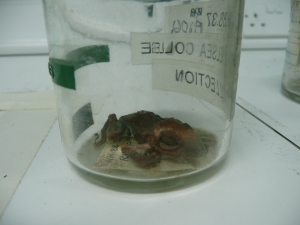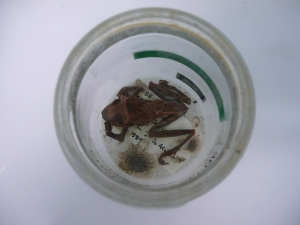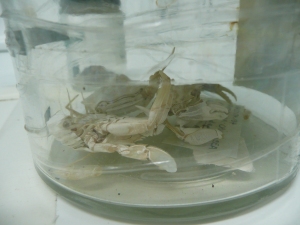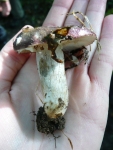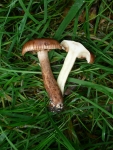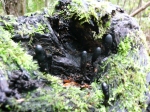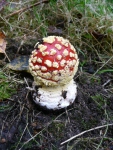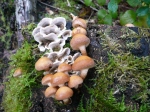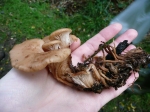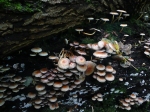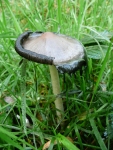Today began with us checking our specimens in their baths of Decon-90. My harbour crabs were declared done and ready for fixation, but the tree frog was still rather stiff and unresponsive, so he went back on the hotplate to cook a little longer.
‘Fixing’ specimens involves bathing them in a fixative, in this case formalin (a dilute solution of formaldehyde dissolved in water), which stabilises tissues by binding to amines in protein, making them less soluble and mobile. Most specimens also need to be injected with formalin, to ensure that it penetrates the whole body and the internal organs don’t start to degrade. My crabs did not need injecting, as the formalin could get inside the carapace fairly easily to reach the tissues.

Here you can just about see the glass microscope slides being used to force my still floaty crabs beneath the surface of the formalin to make sure that it penetrates evenly.
While our specimens were busy fixing, we went for our morning’s lectures, which included information on the various jar sealants that have historically been used and which one is likely to come across in a museum collection, mounting pelagic specimens using monofilament wire and glass backing plates, and also information on dealing with fluid-preserved botanical specimens.
Next it was back to the lab, where my frog was finally supple enough to be fixed in formalin, and my crabs were ready for the next stage. Once fixed, specimens are usually then transferred into alcohol, which acts as a preservative and prevents them decaying over time. A solution of 70 – 80% Industrial Methylated Spirits (IMS) is used for this. But with specimens that have dried out completely in their jars (as mine had), they can’t be put straight into 80% IMS, as this would damage them. Instead, they need to be stepped up in gradual stages to 80%, starting with a low alcohol concentration.
But before my critters could go into their alcohol, they had to be treated for the air inside them that was causing them to float. This was done in a dessication chamber attached to a vacuum pump, which pulls the air out of the chamber, and removes air bubbles from the body cavity of the specimen.

Unfortunately, while quite a lot of air did come out of my specimens, they failed to sink totally, even after several treatments in the vacuum. As the frog will be mounted on a glass backing plate anyway, this isn’t too important.
While waiting for my specimens to work their way up the alcohol ladder, I also attempted to make a lid for the frog’s jar by cutting a circular piece of glass from a sheet…after three failed attempts, I resorted to a ready-cut lid! Which is cheating, but I did at least get the principle of how it should work, and why mine went wrong. I also drilled a hole in my shiny new lid, which can be used to top up the alcohol in the finished jar in the future if the level gets too low, without having to go to the hassle of removing the lid (which will be well sealed).
I also started a new project, which is this little chap:

He is a small monitor lizard (of the genus Varanus), and he has clearly been squashed into a jar that was too small for him, as he is rather hunched and his tail curls around quite a lot. His main problem, however, was that the fluid level in his jar was far too low, as you can see above. He was still fairly flexible, so I didn’t need to put him into Decon-90, but instead moved him into a nice, new, (and much larger) jar and doused him in his first batch of IMS.
Tomorrow I will finish moving the frog and the lizards up the alcohols, mount the frog on his backplate, and attempt to re-attach some stray crab legs. Can’t wait!




